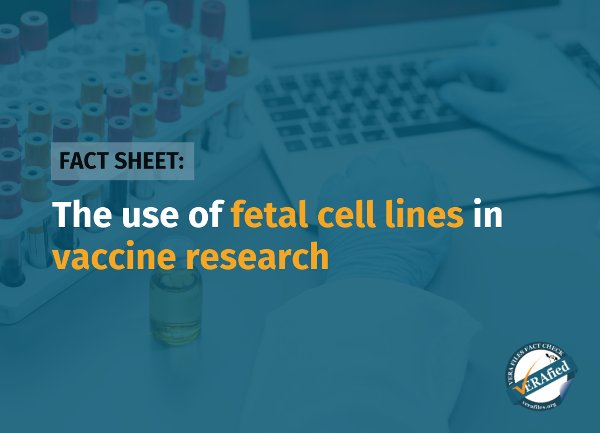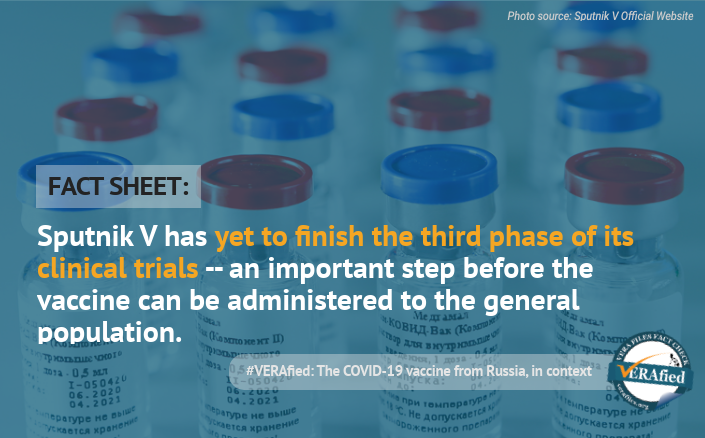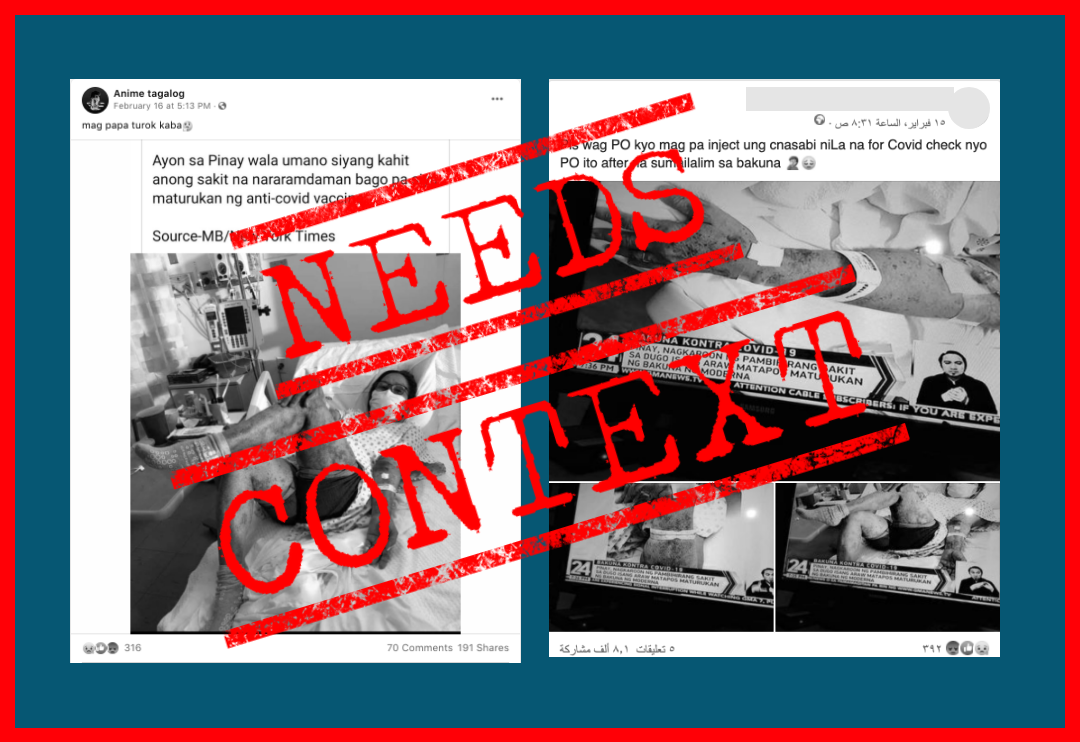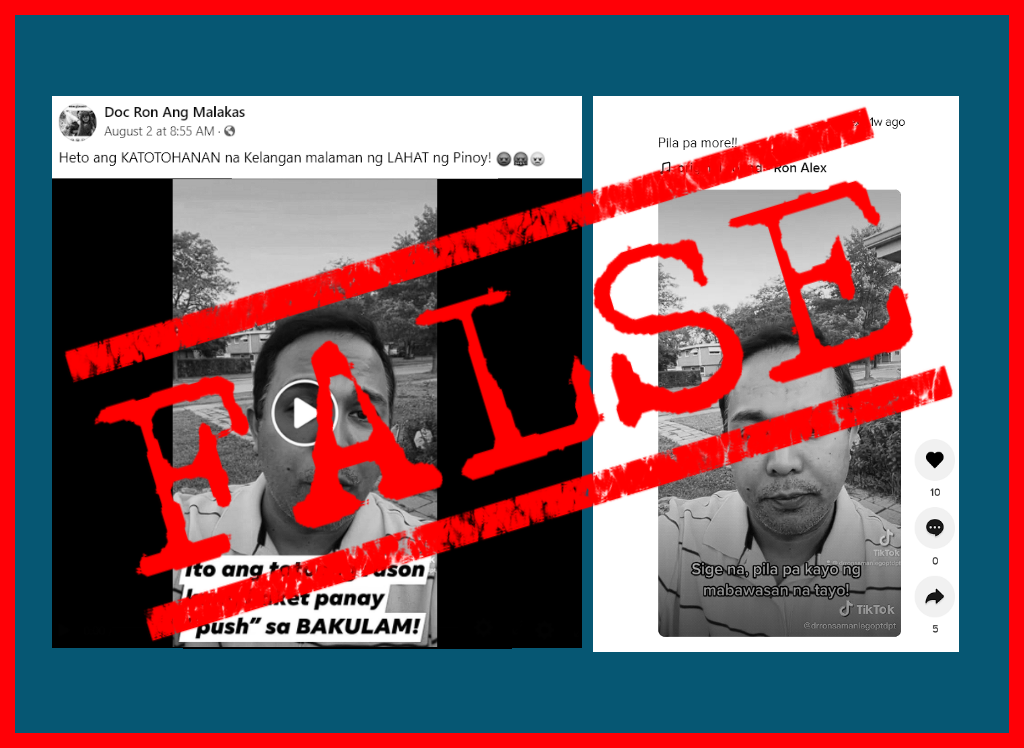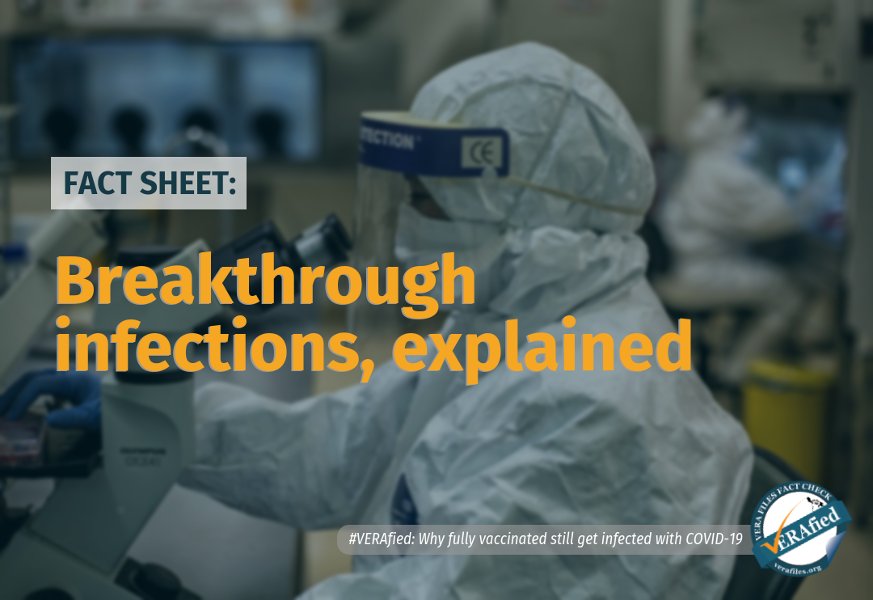As the Philippine government continues to roll out coronavirus disease 2019 (COVID-19) vaccines to its target of 70 million people, anti-vaccine advocates shared a social media post in May wrongly claiming COVID-19 vaccines contain fetal tissue. (See VERA FILES FACT CHECK: COVID-19 vaccines do NOT contain ‘chopped parts’ of aborted fetuses)
Similar false narratives have circulated as early as November 2020 in several countries, undermining trust in vaccination using morality-based arguments. Others stated the jabs were made from lung tissue or fetal cells from aborted fetuses.
These largely stem from misconceptions on the use of fetal cell lines in vaccine development and testing.
What exactly are fetal cell lines, and how are scientists using it in vaccine research? Here are three things you need to know:
1. What are fetal cell lines?
Fetal cell lines are multiplied, lab-grown cells derived from tissue of electively aborted fetuses in the 1960s and 1970s. A single fetal cell can be multiplied and freezed, and used for the research and development of vaccines.
“These fetal cell lines are not tissues. They’re not chopped up parts … No scientist goes out and uses chopped up parts of tissues in [vaccine] manufacturing,” said scientist Isagani Padolina, a member of the Department of Health’s Vaccine Expert Panel, in an interview with VERA Files Fact Check.
“It doesn’t grow into a person. It just stays as cells,” he added.
Padolina, who is also head of research and development at Pascual Pharma Corp., said fetal cell lines are ideal in vaccine research because these are easy to propagate given the right conditions, food, and medium.
He added that fetal cell lines are also easy to transfect, which means they can be easily injected with DNA that will carry instructions to create specific types of proteins used for vaccine research and production.
The use of fetal cell lines for vaccine research originated from Leonard Hayflick, an American cell culture expert who managed to extract cells from the lung tissue of a three-month-old female fetus aborted by a Swedish woman in 1962.
Before fetal cell lines were available, scientists used cells from animals to develop vaccines and conduct cancer research. The cost of killing animals, as well as the presence of potential diseases in animal cells, led to a search to develop a “clean” cell line from electively aborted fetuses.
2. What role do fetal cell lines play in vaccines?
Fetal cell lines are used in any of these three stages of vaccine development, according to American infectious disease expert James Lawler of Nebraska Medicine:
- development (identifying what works in a vaccine),
- testing (confirming the vaccine works), and
- production (manufacturing the formula that works).
Lab-grown cells have been used to create vaccines for illnesses such as rubella, rabies, hepatitis A, chickenpox, and the original shingles.
For COVID-19 vaccines, some biopharmaceutical companies used fetal cell lines for their testing and development phases.
Fetal cell line HEK 293, derived from the kidney tissue of an aborted human embryo in 1973, was used to test the effectiveness of the Pfizer and Sinovac vaccines.
Meanwhile, the Gamaleya Research Institute used HEK 293 to produce the human adenovirus vector, which is the key ingredient in its COVID-19 vaccine. The same cell line was used to test Sputnik V’s effectiveness.
Fetal cell lines can be used to grow the weakened viruses put in some vaccines, which help build immunity against diseases.
Apart from Gamaleya, AstraZeneca also used HEK 293 to reproduce a weakened and non-replicating version of the adenovirus causing the common cold in chimpanzees, which was programmed with instructions to create proteins that would help the human body fight the virus that causes COVID-19.
To test whether or not their vaccine works, AstraZeneca used MRC-5, another fetal cell line originally obtained from the lung tissue of a 14-week-old fetus aborted in 1966.
3. Do COVID-19 vaccines contain baby parts?
COVID-19 vaccines do not contain cells or tissues from aborted fetuses.
Vaccines developed with the help of fetal cell lines, such as those of Astrazeneca and Gamaleya, use a purification process to ensure that no fetal cell line fragments remain in the drug.
It’s possible to see residual DNA from the fetal cell lines, but they are not recognizable as human DNA, according to public health experts from the Health Lab of technology nonprofit Meedan.
“‘Pag pinurify mo na siya hindi ka na nag-i-inject ng cell line sa katawan mo (When a vaccine is purified, you don’t inject cell lines into your body anymore),” Padolina said.
“If you make beer, you don’t see a lot of yeast cells in the beer because it’s been filtered. Vaccines undergo a stricter purification process because we administer it to people,” he added.
Sources
Department of Health (Philippines) Official Facebook Page, [VACCINE ROLLOUT UPDATE: 26 May 2021]…, Accessed May 31, 2021
CNN Philippines, Gov’t keeps 70M vaccination target by year-end, eyes ‘better Christmas’ for Filipinos, March 18, 2021
First Draft News, Vaccine trials are leaving misinformation in their wake, Dec. 2, 2020
Reuters Fact Check, Fact check: Lung tissue of an ‘aborted male foetus’ is not in the vaccine for coronavirus, Nov. 17, 2020
Reuters Fact Check, Fact Check-Johnson & Johnson’s COVID-19 vaccine does not contain aborted fetal cells, April 2, 2021
The Children’s Hospital of Philadelphia YouTube Channel, How Can We Still Use a Fetal Cell Line from the 1960s to Make Vaccines Today? Jan. 13, 2020
Isagani Padolina, personal communication, May 21, 2021
The Children’s Hospital of Philadelphia, News & Views: Why Were Fetal Cells Used to Make Certain Vaccines? April 25, 2017
National Geographic, The Strange History of Vaccines—And Why People Fear Them, Feb. 26, 2017
The Conversation, Cells from human foetuses are important for developing vaccines – but they’re not an ingredient, March 27, 2021
Nebraska Medicine, You asked, we answered: Do the COVID-19 vaccines contain aborted fetal cells?, March 2, 2021
The History of Vaccines, Human Cell Strains in Vaccine Development, Jan. 10, 2018
American Type Culture Collection, 293 [HEK-293] | CRL-1573™, n.d.
Nature, Genome dynamics of the human embryonic kidney 293 lineage in response to cell biology manipulations, Sept. 3, 2014
Charlotte Lozier Institute, Update: COVID-19 Vaccine Candidates and Abortion-Derived Cells, March 3, 2021
National Medicines Research Authority of Sri Lanka, Evaluation Report for Emergency Use Permission | COVID-19 Vaccine (SPUTNIK V), March 4, 2021
Meedan Health Desk, What is the context behind the misinformation about fetal cells used in the AstraZeneca COVID-19 vaccine?, Nov. 16, 2020
University of Oxford Vaccine Knowledge Project, COVID-19 vaccines, March 3, 2021
American Type Culture Collection, MRC-5 | CCL-171™, n.d.
Coriell Institute for Medical Research, AG05965-C | Fibroblast from Skin, Lung, n.d.
(Guided by the code of principles of the International Fact-Checking Network at Poynter, VERA Files tracks the false claims, flip-flops, misleading statements of public officials and figures, and debunks them with factual evidence. Find out more about this initiative and our methodology.)
